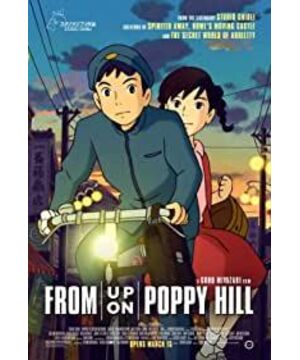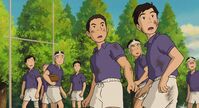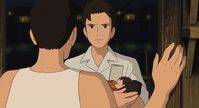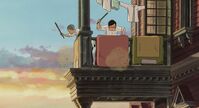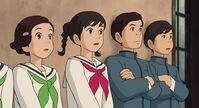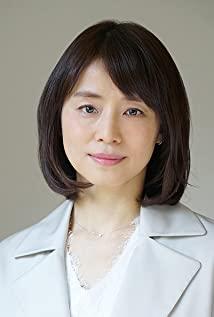The movie "From the Poppy Slope" was adapted from the manga of the same name published in the girls' magazine "Good Friends (なかよし)" from January to August 1980 (original authors: Takahashi Chizuru, Sayama Tetsuro). The story tells about a pure love between a 16-year-old girl and a 17-year-old boy in Yokohama in the 1960s. Along with the hustle and bustle on the eve of the Tokyo Olympics, the restlessness, excitement, and the refreshing world of seaside towns that were typical of Japan's post-war period of high economic growth in the last century have been reproduced one by one.
Following the release of the first work "Arrietty who borrowed things" (director Mirin Hongchang), the first work of Studio Ghibli's 5-year plan for young filmmakers, "From the Poppy Slope" has been discussed for more than ten years in the planning stage. "Finally was able to move on to a scene. This time, the director is not a newcomer, but Goro Miyazaki, the son of Hayao Miyazaki, who made his official debut with "Legend of Earthsea", but has also been criticized by all parties. In his debut 5 years ago, Goro Miyazaki's poor performance not only aroused the dissatisfaction of his father, but also caused the original author Ursula K. Force Studio's doubts. After that, Wu Lang was hidden by his father for 5 years. "If I fail again this time, I will resign from the directorship!" With the consciousness of breaking the boat, Goro Miyazaki is again the director of the animated film. The background of the story is set in 1963, before Miyazaki Goro was born. In order to accurately grasp the atmosphere of that era, he made a lot of reference to the youth films shot by Nikkei in that year, such as "Red Flowers and White Flowers" (1962), "Blue Mountains" ( 1963), "Rain of the Middle" (1963), "Beautiful しい暦" (1963), etc., from the lines of the characters in the play to the tone and speed of speech.
As the father and head of the studio, Hayao Miyazaki initially opposed Goro Miyazaki as the director of the film, but he did a good job of escorting it. He himself served as the film's planning, script and other positions, and also participated in the character and background setting, sketching and other work, including the concept poster of the film, which was also done by Hayao Miyazaki himself. During the production process, the father and son fought arduously for their own ideas. On the basis of maintaining the characteristics and reality of the original script, Goro Miyazaki made corresponding changes to the relevant scenes, dialogues and the tone of the plot. And further strengthen the theme of "the future is born from the past". It can be said that this is a work that condenses all the efforts of Miyazaki and his son.
In terms of seiyuu, the heroine Matsuzaki Sea is played by Nagasawa Masami, who had previously dubbed the game "The Sorcerer of Nino Country Paint Black". This is her first time to challenge the dubbing work of an animated feature film. The male protagonist Kazama Jun invited Okada Junichi (V6), who had cooperated in "Legend of the Earth Sea", to take on the role of 30-year-old "old age" to challenge the role of 17-year-old, which is no different to Okada. challenge. In addition, other roles are played by regulars in Studio Ghibli works such as Takeshita Keiko, Ishida Yuriko, Hiiragi Rumi, Kazebuki Jun, Naito Takeshi, Kagawa Teruzhi, etc. Their appearance is bound to give Ghibli animation Fans bring a warm and intimate feeling.
Takuma Aoi, who became famous for "Legend of the Earth Sea", once again joined hands with "Bole" Miyazaki Goro this time, and presented the theme song "Summer of Farewell (さよならの夏~コクリコsakaから~)" and 3 other songs for the film Insert song. The arrangement of these tracks is entirely undertaken by famous musician Takebe Satoshi, whose brisk and bright Jazz Pop style is quite in harmony with the exuberant 1960s, and at the same time brings a bright and hopeful atmosphere to the film.
The film was released on 457 screens across the country on July 16, 2011. About 450,000 people were mobilized to watch on the 16th and 17th, and it ranked third in the first week.
Trivia
·The episode "上を向いて歩こう" is a golden song popular in Japan in the 1960s, sung by Hisashi Sakamoto. The song was introduced to Europe in 1962 to widespread critical acclaim. Later, it was renamed "Sukiyaki" with a more Japanese flavor in France, and it became popular all over the world. It once ranked first on Billboard, and there are many singing versions. To Qifeng's film "True Hero" also used this song as an important element throughout the play.
·In the animated version, the heroine's surname was changed from "Matsuzaki" in the original book to "Matsuzaki". In addition, Hai's mother's name changed from "Hong Jiang" to "Ryoko", and her occupation changed from a cameraman to a university associate professor. Kitami, a resident of the Matsuzaki house, not only changed his name and occupation, but also changed his gender.
·In the early years, Hayao Miyazaki's niece left behind many shojo manga magazines in the mountain cabin, and "From the Poppy Slope" caught the attention of Hayao Miyazaki and producer Toshio Suzuki. After more than ten years of filming discussions, the filming plan was not put on the agenda until the production of "Arrietty the Borrower".
·Also published in the magazine together with "From the Poppy Slope" (director: Kondo Yoshifumi), another thing in common between these two girl pure love manga is that they have not completed the serialization.
· Goro Miyazaki also filled in the lyrics for the two episodes in the film.
The U flag (red and white) and the W flag (blue, white and red) in the international signal flags raised every morning by the Matsuzaki Sea, the former means "your ship will be in a dangerous state", the latter means "this ship needs medical assistance".
· NHK specially produced the documentary "Two People's "Slope of Poppies": The 300-Day War of Father and Son , the film truly records the scenes of Miyazaki's father and son arguing due to different ideas.
View more about From Up on Poppy Hill reviews


